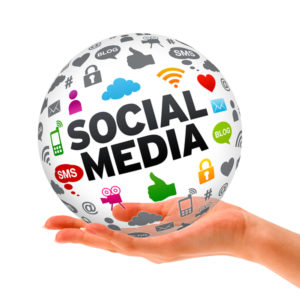Regarding kids and their phones, I find myself asking, “Can we put the genie back in the bottle?” Of course, the answer is no.
But here I was, at a Bar Mitzvah, and I noticed a boy, 12 years old, riding my 3-year-old granddaughter’s tricycle in the corridor. This was obviously a bad idea on many levels. The tricycle could break. He should be attending the service. And if he wanted to kill time, why ride a toddler’s tricycle? I asked him this question, and he replied, “They took my phone away. I’m bored.”
Upon glancing through a window, I noticed a football on the ground. I suggested he throw some leather and pointed to the football. He shot back, “I don’t like throwing footballs. I just want my phone.”
At least he agreed to no longer ride the tricycle.
This brief episode had me wondering whether kids have lost their ability to play without technology. Also, what role did the cellphone and the larger landscape of social media play in shaping our children’s interactions with their physical world?
In investigating how this Pandora’s box opened, I learned the following: In the late 1970s, computer hobbyists became enthralled with a brave new promise of technology. Using homemade computers and dial-up modems, they began to form communities and share information. Energy and big dreams emerged.
CompuServe observed the excitement and, in 1979, responded with time-sharing services. Paying by the minute, customers could access weather, news and other information online. Even better, they could “chat” online in real-time.
The advent of chatting laid the groundwork for a less innocent online era. Using CompuServe, messaging became popular. Enter AOL, which made dial-up computing easy and introduced breakthrough Instant Messenger (IM). It also offered a better interface and a flat-fee model. AOL’s dominance culminated in 1998 when it acquired CompuServe.
By the early 2000s, kids were using IM and creating “buddy lists.” A new social order emerged, and parents were left in the dark. I floated a book proposal to educate parents on IM language and assorted behaviors. Publishers thought “IM Savvy” was a silly idea. It felt like much ado about nothing, and children were supposed to learn our language.
Soon, MySpace entered the market and added pop culture — music and video — from around the globe. Social media was now in full bloom, and “influencers” were thriving. MySpace eventually lost to Facebook, which entered the market in 2004. Facebook perfected friending with better software and no pop-up ads.
Social media’s more ominous underbelly began to unfold with each successive company. In 2011, Snapchat emerged with the new twist of disappearing messages and no paper trail.
Snapchat’s transience induced users to keep clicking, raising addiction risks. In 2016, TikTok entered with short, catchy videos and a new meaning to the word “viral.”
Consider this. By 2022, TikTok had more than 3 billion downloads and more than 1 billion active users monthly. But the most haunting statistic? Sixty-seven percent of U.S. teens 13 to 17 use TikTok.
Particularly disconcerting, TikTok hypes challenges bound for viral stardom. These have included the well-meaning ALS ice-bucket challenge and harmful challenges such as the “blackout,” where kids choke themselves, and the “skull-breaker,” where kids jump in a way that puts one kid at risk.
The unintended consequences of the social media genie have long been recognized. Reduced attention spans, anxiety, depression, diminished social skills, and physical risks from participating in dangerous challenges are among the concerns making the news many times over.
Ironically, Justin Rosenstein, who invented Facebook’s “like” button, deleted the app, as he explained to the Independent, because he felt it was too addictive.
We all have wondered whether there is anything we can do to change social media into a more positive force. We could emulate Seinfeld and pretend social media is all about nothing, but we know too much. We’ve witnessed the effect of kids tethered to their phones. We have 12-year-old boys riding tricycles out of boredom.
We could cheer the fact that TikTok will likely be banned in the United States. Still, nature abhors a vacuum, and there will be a replacement technology.
Maybe that’s our opportunity.
We can become influencers and demand TikTok’s successor be “kid-safe.” We know the genie is not going back, but maybe we can shape the bottle to contain its effect.
Here is to hoping.
Football anyone?

